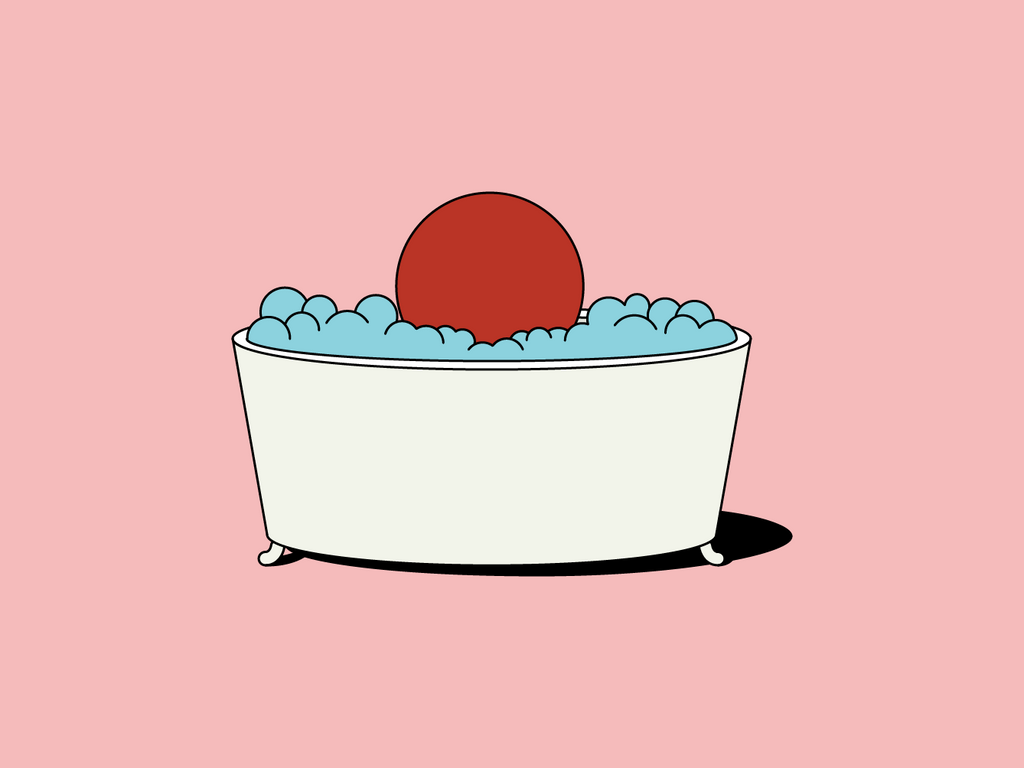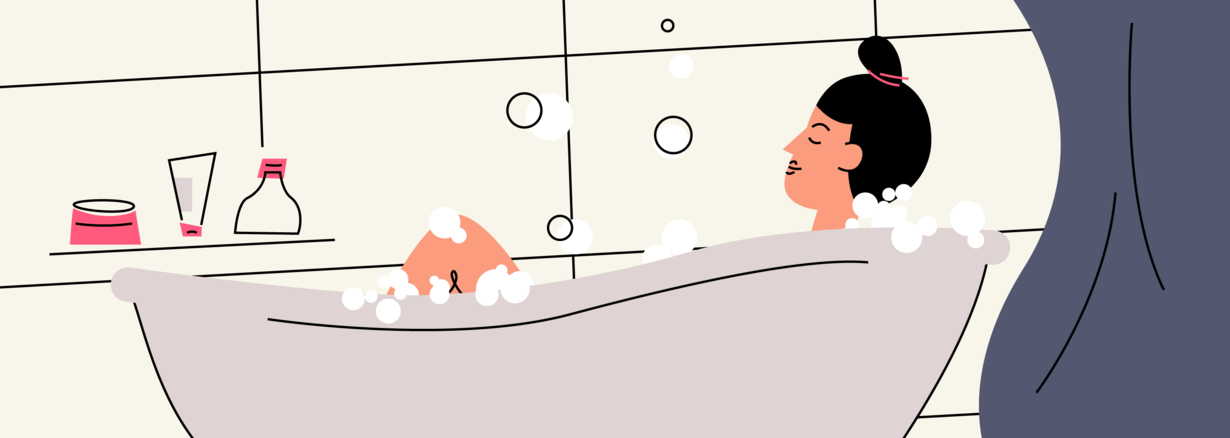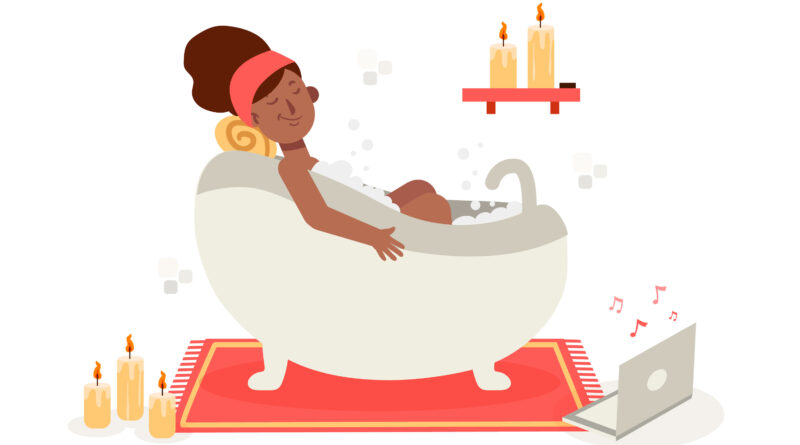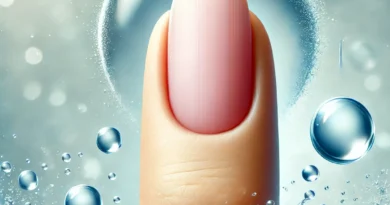Can You Take a Bath on Your Period: Debunking Myths and Facts
Yes, you can take a bath on your period. It’s safe and can even be relaxing.
Many women have concerns about this topic, but there’s no need to worry. Periods can be uncomfortable and stressful. A warm bath can help relieve cramps and tension. Some believe baths are unhygienic during menstruation, but this is a myth.
Bathing can actually be a soothing way to care for yourself. Remember to keep the water clean and at a comfortable temperature. Use mild soap and avoid harsh chemicals. Feeling clean and refreshed can improve your mood. So, don’t hesitate to enjoy a bath during your period. It’s a simple way to feel better.

Bathing During Menstruation
Bathing during menstruation is a topic that often sparks curiosity and concern. Many women wonder if it is safe or beneficial to take a bath while on their period. The good news is that bathing can be a soothing and healthy practice during this time. Let’s explore the benefits of bathing during menstruation and clear up some common myths.
Benefits Of Bathing
Taking a bath during your period can offer several benefits:
- Relieves cramps: Warm water helps relax your muscles, easing menstrual cramps and reducing discomfort.
- Reduces stress: A warm bath can help lower stress levels, offering a mental break and promoting relaxation.
- Improves hygiene: Bathing helps keep the genital area clean, reducing the risk of infections and odor.
- Enhances sleep: A bath before bedtime can help improve your sleep quality, which is often disrupted during menstruation.
In addition to these benefits, baths can also be a time for self-care. Add some bath salts or essential oils like lavender for extra relaxation. Remember to maintain a moderate water temperature to avoid any discomfort. Overall, bathing can be a simple yet effective way to care for your body and mind during your period.
Common Myths
There are several myths surrounding bathing during menstruation. Let’s debunk some of these:
- You shouldn’t take a bath on your period: This is false. Bathing is safe and can be beneficial during your period.
- Baths increase the flow: Warm water may cause slight temporary blood flow due to muscle relaxation, but it does not increase the overall amount of menstrual blood.
- Bathing in warm water can stop your period: This is another myth. Warm water can make you feel more comfortable, but it will not stop your period.
- Bathing can cause infections: Keeping the genital area clean with water is good hygiene practice. Ensure the bathtub is clean to avoid any potential risks.
Understanding the facts can help you make informed decisions about your menstrual hygiene. Bathing during your period is not only safe but can also offer various physical and mental health benefits.
Health Considerations
Taking a bath during your period can be relaxing and soothing. However, there are some health considerations to keep in mind to ensure a safe and comfortable experience. Paying attention to hygiene practices and skin sensitivity is crucial.
Hygiene Practices
Maintaining proper hygiene during your period is essential. Here are a few tips to ensure you stay clean and healthy:
- Use warm water: Warm water helps in relaxing muscles and alleviating cramps. Avoid using very hot water as it can dry out your skin.
- Clean the bathtub: Ensure the bathtub is clean before taking a bath. Use a mild disinfectant to remove any bacteria or germs.
- Change your tampon or menstrual cup: If you use a tampon or menstrual cup, change it before entering the bath to avoid leakage and maintain cleanliness.
- Limit bath duration: Prolonged baths can lead to vaginal dryness and irritation. Keep your bath time to around 15-20 minutes.
- Avoid bubble baths: Bubble baths can contain harsh chemicals that may irritate the genital area. Opt for plain water or use a mild, fragrance-free soap.
Following these hygiene practices ensures that your bath is not only relaxing but also safe and clean.
Skin Sensitivity
During your period, your skin can become more sensitive. This sensitivity requires extra care to avoid irritation and discomfort:
- Avoid harsh soaps: Use mild, fragrance-free soaps to cleanse your body. Harsh soaps can strip the skin of natural oils and cause dryness.
- Moisturize after bathing: Apply a gentle, fragrance-free moisturizer after your bath. This helps to lock in moisture and keep your skin hydrated.
- Monitor water temperature: Hot water can exacerbate skin sensitivity. Use lukewarm water to avoid irritation.
- Pat dry gently: After bathing, gently pat your skin dry with a soft towel. Avoid rubbing, as it can cause irritation.
- Wear breathable fabrics: After your bath, wear clean, breathable cotton underwear. This helps to prevent moisture buildup and reduces the risk of infections.
Being mindful of your skin’s sensitivity during your period can help you avoid irritation and maintain comfort.
Types Of Baths
Many women wonder about taking a bath during their period. The good news is that you can. In fact, it can help you feel better and more relaxed. Let’s explore the types of baths you can take during your period to ensure comfort and relief.
Warm Water Baths
Warm water baths are a popular choice during menstruation. They offer many benefits that can help ease discomfort and improve your mood. Benefits of Warm Water Baths:
- Relieves cramps: The heat from the water can help relax your muscles and reduce menstrual cramps.
- Reduces stress: Warm baths can be soothing and help lower stress levels.
- Improves sleep: A warm bath before bed can help you sleep better.
Taking a warm bath is easy. Here are some steps to follow:
- Fill your bathtub with warm water. Make sure it’s not too hot.
- Add some Epsom salts or essential oils if you like.
- Soak in the bath for about 20-30 minutes.
- Rinse off with cool water to close your pores.
Precautions: While warm water baths are generally safe, there are a few things to keep in mind:
- Don’t use extremely hot water. It can cause dizziness or discomfort.
- If you have a heavy flow, consider using a tampon or menstrual cup to prevent leaks.
- Stay hydrated. Drink water before and after your bath.
Cold Water Baths
Cold water baths are less common but can also be beneficial during your period. They offer a different set of advantages. Benefits of Cold Water Baths:
- Reduces inflammation: Cold water can help reduce swelling and inflammation.
- Boosts energy: A cold bath can refresh you and give you a burst of energy.
- Tightens skin: Cold water can help tighten your skin and reduce puffiness.
Taking a cold bath can be invigorating. Here’s how to do it:
- Fill your bathtub with cool or cold water.
- Add some ice cubes if you want it colder.
- Soak for about 5-10 minutes. Start with shorter durations if you’re not used to it.
- Gradually warm up by toweling off and dressing warmly afterward.
Precautions: Cold water baths can be refreshing, but consider these points:
- Don’t stay in the cold water for too long. It can lower your body temperature too much.
- If you feel uncomfortable or start shivering, get out of the bath.
- Cold baths are not recommended if you have heart problems or certain health conditions. Consult your doctor if unsure.

Tampons Vs. Pads
Can you take a bath on your period? The answer is yes. But many women wonder about the best protection during this time. Should you use tampons or pads? Each option has its pros and cons. Here, we’ll explore both to help you make an informed choice.
Using Tampons
Using tampons while bathing can be convenient. Tampons are worn internally, so they won’t get wet during your bath. This means you can relax without worrying about leakage or discomfort. Here are some benefits of using tampons:
- Comfort: Tampons are less likely to cause irritation as they stay inside your body.
- Discreet: No visible signs of menstrual products.
- Freedom: Allows you to swim and bathe without restrictions.
However, there are some considerations:
- Toxic Shock Syndrome (TSS): Though rare, TSS can be serious. Change tampons regularly to reduce the risk.
- Insertion: Some women find tampons difficult or uncomfortable to insert.
- Removal: Always remove the tampon before it gets too saturated to avoid leaks.
Here is a quick comparison table:
| Pros | Cons |
|---|---|
| Comfortable | Risk of TSS |
| Discreet | Insertion can be tricky |
| Allows swimming and bathing | Requires regular changing |
Using Pads
Pads are another option for period protection. They are worn externally and absorb menstrual flow. Many women find pads easier to use and more comfortable for everyday activities. Here are some benefits of using pads:
- Easy to Use: No insertion needed, just place it in your underwear.
- Low Risk: No risk of TSS associated with pads.
- Variety: Comes in different sizes and absorbencies to match your flow.
There are also some drawbacks:
- Visibility: Pads can be more noticeable under tight clothing.
- Movement: They may shift out of place during physical activities.
- Water: Pads can become wet and uncomfortable if you take a bath.
Here is a quick comparison table:
| Pros | Cons |
|---|---|
| Easy to use | Visible under tight clothes |
| Low risk of TSS | May shift during activities |
| Variety of sizes | Uncomfortable when wet |
Alternative Relaxation Methods
Being on your period can be a challenging time, and many wonder if they can take a bath during this phase. While baths are a common method of relaxation, there are other ways to unwind and feel comfortable. Here, we explore some alternative relaxation methods that can help you feel better during your period.
Showers
Showers can be an excellent alternative to baths. They offer numerous benefits, especially during your period. Here are some reasons why showers might be a preferable option:
- Hygiene: Showers help maintain better hygiene as they constantly rinse away blood and bacteria.
- Convenience: Quick and easy, showers save time compared to filling a bathtub.
- Temperature Control: You can easily adjust the water temperature to your preference.
- Muscle Relief: A warm shower can help soothe cramps and muscle aches.
To make your shower even more relaxing, consider the following tips:
- Use a showerhead with a massage setting: This can help target sore muscles and provide a gentle massage.
- Incorporate essential oils: Adding a few drops of lavender or eucalyptus oil to your shower can create a spa-like experience.
- Play calming music: Listening to soothing tunes can enhance relaxation and help you unwind.
If you prefer a visual comparison, here is a table outlining the benefits of showers versus baths:
| Showers | Baths |
|---|---|
| Better hygiene | Less hygienic |
| Quick and convenient | Time-consuming |
| Easy temperature control | Temperature may fluctuate |
| Effective for muscle relief | Effective for relaxation |
Aromatherapy
Aromatherapy can be a powerful method to relax and alleviate period discomfort. Utilizing essential oils can provide both physical and mental relief. Here are some ways to incorporate aromatherapy into your routine:
- Essential Oil Diffusers: Use a diffuser to disperse calming scents like lavender or chamomile throughout your room.
- Aromatherapy Candles: Light candles infused with essential oils to create a soothing atmosphere.
- Topical Application: Dilute essential oils with a carrier oil and apply to your skin for a calming effect.
Different essential oils have unique benefits:
| Essential Oil | Benefit |
|---|---|
| Lavender | Reduces stress and promotes sleep |
| Chamomile | Soothes nerves and reduces cramps |
| Peppermint | Relieves headaches and muscle pain |
| Clary Sage | Balances hormones and reduces menstrual cramps |
For the best experience, consider these tips:
- Choose high-quality oils: Ensure you’re using pure, therapeutic-grade essential oils for maximum benefit.
- Experiment with blends: Combine different oils to find a blend that suits your needs.
- Create a routine: Regular use of aromatherapy can enhance its effectiveness and help you feel more relaxed.
Incorporating these alternative relaxation methods can make your period more manageable and help you feel more at ease.
:max_bytes(150000):strip_icc()/period-myths-2721944-v1-5e955f63fde542648f512919e2b2ef05.jpg)
Cultural Perspectives
Taking a bath during your period is a topic with many opinions. Some cultures have strict rules, while others see it as normal. Understanding these cultural perspectives can help you make an informed decision.
Different Beliefs
Beliefs about bathing during menstruation vary greatly. In some cultures, it’s seen as unclean or even dangerous. In others, it’s seen as a way to relax and relieve cramps. Here are a few examples:
- Western Cultures: Generally, taking a bath during your period is considered normal and even beneficial. Warm water can relieve menstrual cramps and help you relax.
- Middle Eastern Cultures: Some believe that bathing during menstruation can lead to health issues. This belief stems from traditional views about the body’s vulnerability during this time.
- Asian Cultures: In some parts of Asia, women avoid bathing during their period. They believe it can disrupt the body’s balance and cause illness.
These beliefs are often passed down through generations. They may be based on tradition rather than scientific evidence. It’s essential to respect these views while making choices that are right for you.
Regional Practices
Practices surrounding menstruation and bathing also differ by region. These practices are influenced by local customs, religion, and historical context. Let’s look at some regional practices:
| Region | Practice |
|---|---|
| India | In some areas, women avoid bathing for the first few days of their period. They believe it affects fertility. |
| Africa | In certain communities, women use herbal baths. They believe these baths cleanse the body and spirit. |
| Europe | Many women continue their regular bathing routines. They use warm baths to ease menstrual discomfort. |
These practices show how diverse the world is. They also highlight the importance of understanding and respecting different cultural norms. Knowing these regional practices can help you navigate conversations about menstruation with sensitivity and awareness.
Consulting A Doctor
Taking a bath during your period can be a relaxing and soothing experience. However, some women may wonder if it’s safe or if they should consult a doctor first. This blog section will provide guidance on when to seek advice from a medical professional and what medical conditions might necessitate consultation.
When To Seek Advice
If you have any concerns about taking a bath during your period, it’s always a good idea to consult a doctor. Here are some specific instances when seeking advice is recommended:
- Heavy Menstrual Flow: If your period is exceptionally heavy, you may need to consult a doctor. Heavy bleeding can be a sign of underlying health issues.
- Unusual Pain: Experiencing severe or unusual pain during your period may indicate a condition that requires medical attention.
- Infections: If you have a history of recurrent infections, it’s wise to talk to your doctor before taking a bath during your period.
Additionally, if you notice any of the following symptoms, seek advice immediately:
| Symptom | Possible Concern |
|---|---|
| Fever | Possible infection |
| Severe cramps | Endometriosis or other conditions |
| Foul-smelling discharge | Infection |
These symptoms can be signs of more serious conditions that require medical evaluation. Never hesitate to reach out to a healthcare professional if you’re unsure.
Medical Conditions
Certain medical conditions may affect your ability to safely take a bath during your period. If you have any of the following conditions, consult your doctor:
- Endometriosis: This condition can cause severe pain and heavy bleeding. Your doctor can provide specific advice tailored to your needs.
- Pelvic Inflammatory Disease (PID): PID is an infection of the reproductive organs that can be aggravated by taking a bath. Seek medical advice before soaking in water.
- Vaginitis: Inflammation or infection of the vagina can be worsened by baths. Your healthcare provider can recommend safe practices.
Other conditions to consider include:
- Urinary Tract Infections (UTIs)
- Yeast Infections
- Skin Conditions (e.g., eczema)
If you have any of these conditions, your doctor can help you determine the safest way to maintain hygiene during your period. They can also provide treatment options and preventive measures. Consulting a doctor ensures that you receive personalized advice based on your health history and current conditions. Always prioritize your health and well-being.
Personal Experiences
Taking a bath during your period is a topic surrounded by myths and personal beliefs. While some women find it relaxing, others might feel unsure. Personal experiences can provide valuable insights and reassure those who are hesitant. Let’s delve into some shared stories and tips from others.
Shared Stories
Many women have shared their positive experiences of taking a bath on their period. For some, it’s a ritual that helps them feel clean and relaxed. Here are a few shared stories:
- Alice, 28: “I always take a warm bath during my period. It helps ease my cramps and makes me feel refreshed. I use a bath bomb with essential oils for added relaxation.”
- Emma, 34: “I was hesitant at first, but once I tried it, I found that it made a huge difference. The warm water soothes my back pain and gives me a break from the discomfort.”
- Maria, 25: “I enjoy a bath with Epsom salts. It not only helps with period cramps but also makes my skin feel soft. It’s my self-care time.”
These stories highlight how a simple bath can transform your period experience. Whether it’s for pain relief or relaxation, many women find baths beneficial.
Tips From Others
Based on personal experiences, here are some tips from others on how to make the most of your bath during your period:
- Use Warm Water: Warm water can help relax muscles and reduce cramps.
- Add Essential Oils: Lavender or chamomile oils can enhance relaxation.
- Stay Hydrated: Drinking water before and after your bath helps keep you hydrated.
- Limit Bath Time: A bath of 20-30 minutes is ideal to avoid feeling dizzy or lightheaded.
- Wear a Tampon: If you’re concerned about blood in the water, wearing a tampon can help.
These tips are simple yet effective. They are based on what has worked for others, making your bath time more enjoyable and comfortable during your period.
Frequently Asked Questions
Is It Safe To Take A Bath On Your Period?
Yes, it’s safe to take a bath during your period. Warm water can soothe cramps and help you relax.
Can A Bath Help With Period Cramps?
Yes, a warm bath can help relieve period cramps. The heat relaxes muscles and eases pain.
Should I Use Tampons In The Bath?
It’s optional to use tampons in the bath. They can prevent leaks, but not necessary if you’re comfortable.
Does Taking A Bath Affect Menstrual Flow?
Taking a bath does not affect menstrual flow. The water might temporarily slow it, but it won’t stop it.
Conclusion
Taking a bath on your period is safe and relaxing. Warm water can ease cramps. It helps you feel clean and refreshed. Use gentle, non-irritating products. Listen to your body and do what feels best. Baths can be a great self-care routine.
Enjoy your bath without worry. Always prioritize your comfort. Feel confident about your choices. Your period shouldn’t stop you from relaxing.




